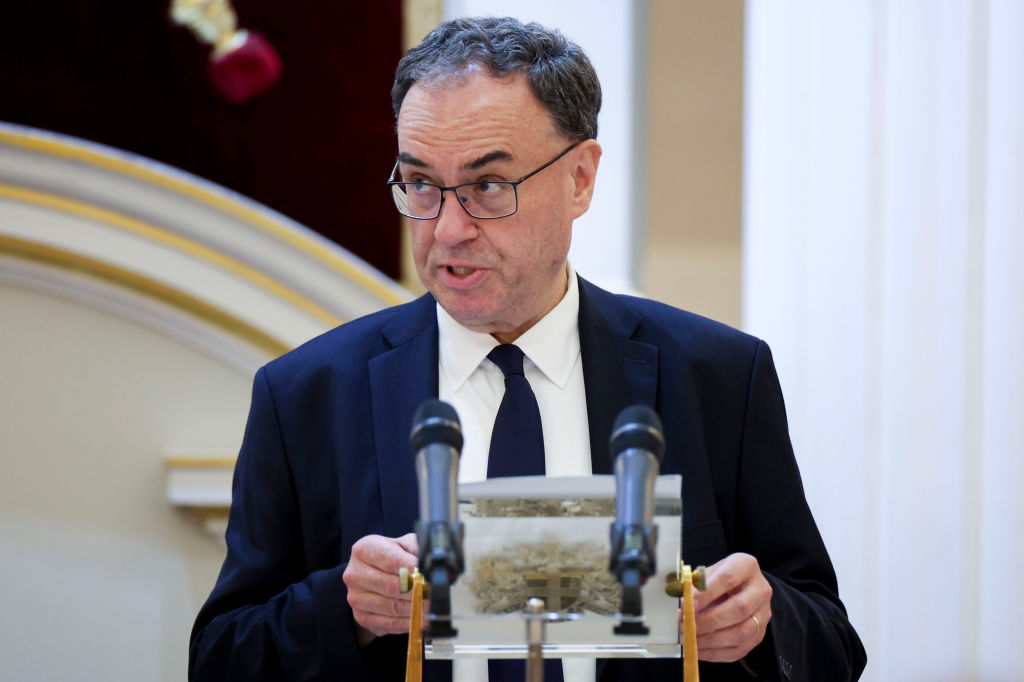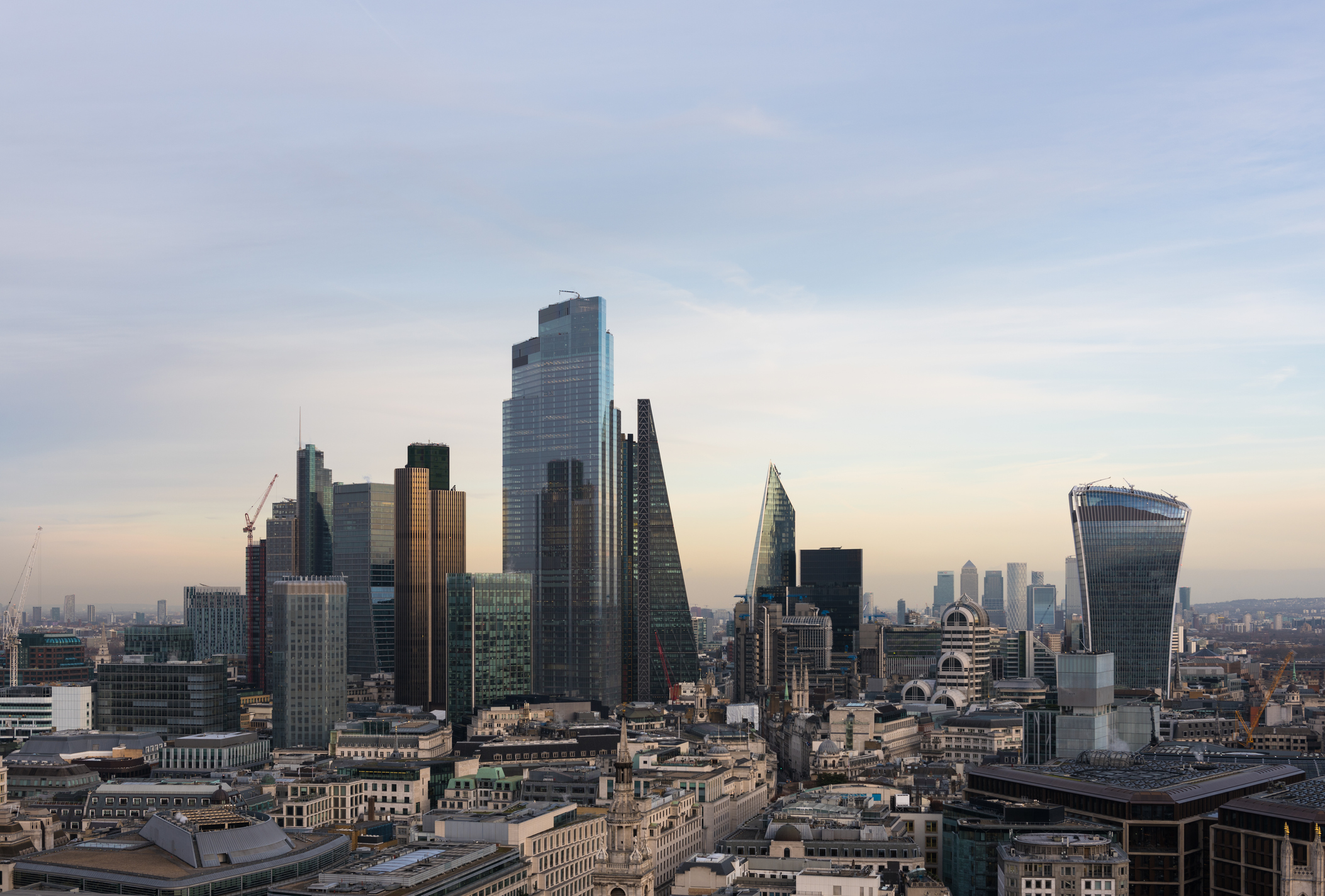UK inflation forecast: where are prices heading next?
UK inflation fell sharply in November. Will this drop be sustained, or should consumers brace for higher inflation readings in 2026?


Inflation is set to fall further throughout 2026, in welcome news for both consumers and chancellor Rachel Reeves.
The disinflationary policies announced in the Autumn Budget are expected to push price growth down by around half a percentage point, according to analysis by the Bank of England.
Inflation was already expected to fall closer to the 2% target in 2026 and early 2027.
MoneyWeek
Subscribe to MoneyWeek today and get your first six magazine issues absolutely FREE

Sign up to Money Morning
Don't miss the latest investment and personal finances news, market analysis, plus money-saving tips with our free twice-daily newsletter
Don't miss the latest investment and personal finances news, market analysis, plus money-saving tips with our free twice-daily newsletter
The main measures announced in the Budget that are expected to to help curb inflation include: extending a 5p cut in fuel duty, the removal of green levies on energy bills, scrapping a customer-funded home insulation scheme, and the freezing of rail fares until March 2027.
These policies mean that prices are pushed down for consumers, putting further downward pressure on inflation. For example, the green levy cut on energy bills could knock around £150 off household bills, the government estimates.
The Monetary Policy Committee (MPC) said in the minutes of its December meeting that the measures could even mean CPI will fall to closer to 2% in the first half 2026.
The minutes said: “This Budget news, in combination with other news in recent CPI data and with some downward moves in sterling oil and gas futures curves since November, had led Bank staff to lower their expectation for CPI inflation to closer to 2% in 2026 Q2.”
The central bank had previously only expected inflation to fall closer to 2% in early 2027.
We look at where inflation is forecast to go over the next year.
What is UK inflation now?
Inflation fell to 3.2% in November, falling for the second consecutive month after reaching a recent peak of 3.8% in July, August, and September.
November’s fall was also sharper than most analysts had predicted. The Bank of England had expected inflation to fall to 3.4%, down from October’s reading of 3.6%.
Lower food, alcohol and tobacco inflation seem to have driven the drop, while lower price growth for clothing, restaurants, and furniture also helped. This was partially offset by an increase in communications inflation.
Grant Fitzner, chief economist at the ONS, said: “Lower food prices, which traditionally rise at this time of the year, were the main driver of the fall with decreases seen, particularly for cakes, biscuits, and breakfast cereals.
“Tobacco prices also helped pull the rate down, with prices easing slightly this month after a large rise a year ago. The fall in the price of women’s clothing was another downward driver.”
When will inflation come down?
The better-than-expected inflation reading for November led some commentators to speculate that we are now coming towards the end of this recent inflationary cycle.
Charlotte Kennedy, chartered financial planner at wealth management firm Rathbones, said the latest figures “suggest the economy is entering the final stretch towards more normal levels [of inflation],” partially thanks to measures announced in the Budget.
Meanwhile, the Office for Budget Responsibility, the UK’s fiscal watchdog, forecast in November that inflation will fall to around 2.1% in Q4 2026 when assessing the economic impacts of policies announced in the Budget.
This view is supported by most economists surveyed by the Treasury, who overwhelmingly expect inflation to be lower by the end of 2026 than it was in the fourth quarter of 2025, all things remaining equal.
When asked in December, the average inflation forecast among them was 3.5% in Q4 2025, falling to an average of 2.2% in Q4 2026.
While forecasts differ among economists, almost all seem to agree that at the very least inflation has peaked and will be on a downward trajectory through 2026.
Sanjay Raja, chief UK economist at Deutsche Bank, said: “We expect disinflation to continue at pace. Why? Negative base effects will kick in over 2026. And government policy measures should reinforce the drop in energy and services prices.
“Weaker pricing power will also help – and potentially accentuate the 2026 price drop. We update our projections accounting for the recent fall in energy prices, including government policy and our most recent webscrapes.”
What’s the link between inflation and interest rates?
Inflation above the 2% target is always a cause for concern for economists, policymakers and consumers.
The Bank of England is particularly concerned about inflation, as it has a remit to guide and control inflation so prices do not spiral out of control.
This is largely done through influencing interest rates, which are typically raised to fight inflation.
Broadly speaking, the trade-off to fighting inflation with higher interest rates is reduced economic activity. When interest rates are high, people have to use more of their earnings on expenses like their mortgage and are incentivised to save their cash as savings rates tend to be higher.
However, despite inflation being forecast to remain above target this year, the Bank of England has been gradually cutting rates since the summer of 2024.
What does falling inflation mean for future interest rate cuts?
The Bank of England chose to cut interest rates to 3.75% at the most recent Monetary Policy Committee meeting on 18 December.
The 25 basis point cut brought the bank rate to the lowest it has been since February 2023.
The vote to cut was narrowly passed by five to four, with governor Andrew Bailey having the deciding vote to cut despite a large faction in the MPC wanting to hold rates at 4%.
In the previous meeting in November, the MPC held rates at 4%, also passing by 5-4.
The reason the December cut was able to be passed was largely due to Andrew Bailey’s belief that disinflation is now “more established” in the economy.
He said: “CPI inflation has fallen from its recent peak and upside risks have eased. Measures in the Budget should reduce inflation further in the near term. The key question for me now is the extent to which inflation settles at the 2% target in an enduring way.”
However, Bailey noted that while he “sees some scope for some additional policy easing,” the path for future rate cuts is not pre-determined.
Moreover, there is an increasing sense among economists that the base rate is coming closer to the neutral level of interest in the economy, potentially meaning that decisions to cut, hold, or raise could become more limited.
Raja at Deutsche Bank said: “As we inch our way towards a more 'neutral' policy setting, we think policy divisions will narrow over 2026.
“Bank Rate is inching its way towards a more 'neutral' policy setting. And the scope for more rate cuts is limited, with the Bank sending its more explicit message yet on the path for policy: ‘judgements around further policy easing will become a closer call’.”
This being said, the house view at Deutsche Bank is still that they expect falling inflation and a deteriorating labour market to “keep quarterly rate cuts in play next year”.
The bank forecasts two rate cuts in 2026 – one in March and one in June – to bring the base rate to 3.25%.
Get the latest financial news, insights and expert analysis from our award-winning MoneyWeek team, to help you understand what really matters when it comes to your finances.
Daniel is a financial journalist at MoneyWeek, writing about personal finance, economics, property, politics, and investing.
He is passionate about translating political news and economic data into simple English, and explaining what it means for your wallet.
Daniel joined MoneyWeek in January 2025. He previously worked at The Economist in their Audience team and read history at Emmanuel College, Cambridge, specialising in the history of political thought.
In his free time, he likes reading, walking around Hampstead Heath, and cooking overambitious meals.
-
 Boost for over 100,000 families on Child Benefit as new HMRC payment system rolled out
Boost for over 100,000 families on Child Benefit as new HMRC payment system rolled outThousands of households will no longer have to pay the dreaded High Income Child Benefit Charge through self-assessment
-
 Are you being haunted by the ghost of Christmas past? How festive cutbacks could boost your long-term wealth
Are you being haunted by the ghost of Christmas past? How festive cutbacks could boost your long-term wealthThe average family spends around £1,000 over the Christmas season. Here’s how much you could have gained if you had invested some of the money instead.
-
 Why investors can no longer trust traditional statistical indicators
Why investors can no longer trust traditional statistical indicatorsOpinion The statistical indicators and data investors have relied on for decades are no longer fit for purpose. It's time to move on, says Helen Thomas
-
 Unemployment hits highest level in almost five years as jobs market cools further
Unemployment hits highest level in almost five years as jobs market cools furtherUnemployment increased to 5.1% in the three months to October as pay growth continues to slow, according to new data from the Office for National Statistics.
-
 Is the Office for National Statistics fit for purpose?
Is the Office for National Statistics fit for purpose?Britain’s statistics authority, the Office for National Statistics, is increasingly unfit for purpose. Why, and what can be done?
-
 Uncertainty ahead of the Budget causes house price growth to stall, says Rightmove
Uncertainty ahead of the Budget causes house price growth to stall, says RightmoveProperty website Rightmove says asking prices increased by just 0.3% in October, well below the 1.3% average for the month
-
 ONS: UK economy unexpectedly shrinks by 0.1% in October – what does it mean for interest rates?
ONS: UK economy unexpectedly shrinks by 0.1% in October – what does it mean for interest rates?The latest GDP figures strengthen the case for a base rate cut in December, experts suggest
-
 UK GDP: UK economy stagnates
UK GDP: UK economy stagnatesLatest GDP data shows the UK economy showed no growth in the third quarter of the year due to rising interest rates. But have we side-stepped a recession?
-
 ONS: UK economy recovered from pandemic faster than previously thought
ONS: UK economy recovered from pandemic faster than previously thoughtRevisions from the ONS showed the UK economy has grown since the pandemic, while the latest data showed GDP grew in the second quarter of 2023.
-
 UK economy avoids stagnation with surprise growth
UK economy avoids stagnation with surprise growthGross domestic product increased by 0.2% in the second quarter and by 0.5% in June
